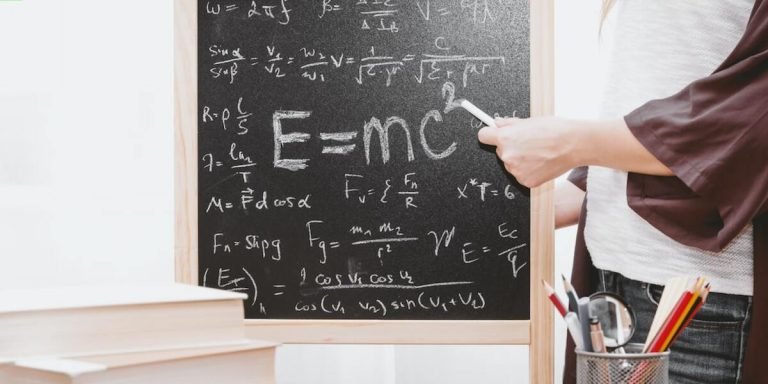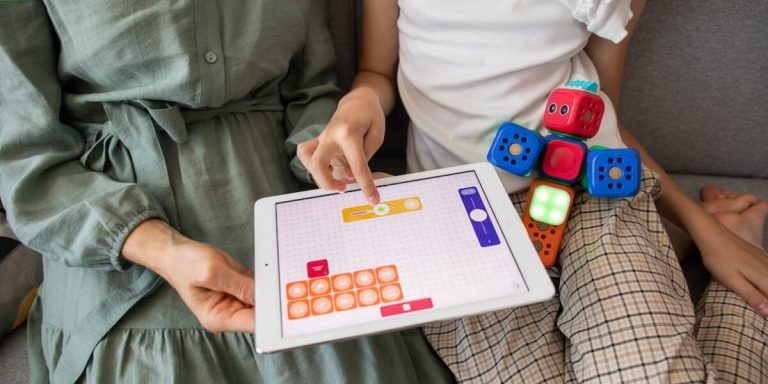Special Needs Teacher: Navigating the Journey of Inclusive Education
Special needs education demands a unique blend of compassion, patience, and skill. Anyone who takes on the role of a special needs teacher willingly embraces these challenges to facilitate an inclusive educational environment for all students. This journey through teaching is not easy but it promises immense gratification as one watches their students overcome hurdles and unlock their full potential.
The significance of robust support systems and resources in scaffolding this noble pursuit cannot be overstated. Special Education Resources are vital tools that empower educators with effective strategies tailored specifically for children with diverse learning requirements. Combined with strong parental partnership, they form the pillars for fostering acceptance while meeting individual academic objectives within mainstream classrooms effectively.
Did you know?
Despite inclusive education being a widely accepted concept today, it wasn’t until 1975 that the United States federal law first required states to provide special education services for children with disabilities in public schools.
Understanding the Role of a Special Needs Teacher
In the ever-evolving landscape of education, a special needs teacher wears numerous hats. They’re not just instructors but also therapists, counselors, advocates and navigators in the vast realm of learning for children with diverse abilities. Their role is underscored by incalculable importance as they gear towards shaping these young minds to reach their full potential.
Technology integration has become an indispensable tool in this respect lately. It offers individualized learning experiences that cater specifically to each child’s unique requirements. Special needs teachers utilize adaptive software programs such as speech-to-text tools or text-to-speech apps that bridge gaps between ability and understanding; thus eliminating traditional barriers preventing students from expressing themselves effectively.
Furthermore, technology grants inclusivity within classrooms like never before imaginable! Interactive whiteboards or digital textbooks facilitate participation among every student regardless of physical limitations while virtual reality can transport them into environments conducive for practical application without leaving comfort zones – proving invaluable especially during pandemic-related restrictions prevalent currently in 2023.
While technology certainly amplifies opportunities when it comes down to educating differently-abled students – we cannot underestimate human empathy powering those devices either! The special needs teacher is still at centerstage interpreting complex information through simple terms accessible by all; simultaneously providing emotional support vital alongside cognitive development amidst challenges faced daily both inside and outside classroom confines.
Qualifications and Training for Effective Teaching
In the vast field of education, a special needs teacher has a unique and important role. They are equipped with specific skills and training to handle students who need personalized learning plans due to their physical or developmental disabilities.
The first step towards becoming an effective special needs teacher is gaining relevant qualifications. This often involves acquiring at least a bachelor’s degree in Special Education or related fields such as Psychology, Social Work, or Child Development.
Beyond this foundational knowledge base, specialized training programs provide aspiring teachers with advanced tools on how best to cater for these students’ diverse requirements. These could include methods like differentiated instruction techniques that help teach children at varying levels of learning within one class setting. More intricate strategies might focus on Applied Behavior Analysis (ABA) – aiding kids who have autism and other disorders understand complex social nuances better.
Similarly crucial is understanding technology integration in education – something especially pertinent as we navigate through 2023 – the age where tech-dominance permeates every sphere including schooling conditions for children with special needs.
Digital platforms can offer myriad ways to enhance traditional teaching methodologies; they transcend beyond mere screen limits pushing boundaries of conventional instructional approaches.
Strategies Employed by Special Needs Teachers in Tailoring Education
Special needs teachers often employ a variety of strategies to tailor education for their students. One such strategy is the use of specialized technology tools designed specifically for this purpose. In 2023, these technological advancements have made it easier and more efficient for special needs teachers to provide individualized instruction.
To begin with, assistive technology plays a significant role in delivering custom learning experiences. A special needs teacher may use software programs that are tailored towards aiding children who struggle with reading or writing tasks, offering them digital alternatives like audiobooks or speech-to-text systems.
Furthermore, interactive whiteboards and touch screen devices offer great value too. These facilitate hands-on interaction which can be beneficial especially when dealing not just cognitive but also motor skill challenges among learners.
Virtual reality (VR) and augmented reality (AR) technologies are gaining popularity as well in the field of special education this year – they enable immersive teaching methods that make lessons more engaging while catering distinctly to every child’s specific requirements.
The trend extends up until educational mobile applications developed solely keeping inclusivity into consideration; many apps readily available amplify engagement levels by introducing gamified elements thus making learning fun even amidst perceived difficulties while others ensure better comprehension using graphical representations or symbolic cues – all on handy smartphones!
Evaluating Educational Tools for Special Needs Classrooms
Incorporating technology in education, particularly for special needs classrooms is not a choice but a necessity. The digital world of 2023 presents an array of educational tools that can magnify the learning experiences for pupils with diverse requirements. However, evaluating and selecting the right tool demands careful consideration.
Special Needs Teachers are pivotal in this tech-integrated instructional approach. Their expertise allows them to identify resources matching individual students’ aptitudes and learning styles. With appropriate assistive technology devices or software programs, they have been instrumental in overcoming traditional barriers to education.
Despite being awash with these technological advancements, one must understand every gadget or application isn’t suitable for all learners under their care—a guiding principle while auditing potential resources is relevance over novelty—the efficacy of a resource lies not just within advanced features it holds but its applicability towards enhancing student’s comprehension levels.
Moreover, support stands as equally important as availability when it comes to using these technologies effectively into lessons planning; post-implementation follow-ups ensure optimal use beyond initial onboarding phases—continuous staff training sessions help maintain dynamic adaptation alongside developing trends ensuring no learner gets left behind amid changing times.
Thus strategic evaluation plays an indispensable role in integrating effective technology systems sensitively curated around Special Education – enabling teachers unlocking potentials breaking through disability-defined boundaries embarking onto promising avenues wherein each child finds themselves thriving academically while building valuable life skills equipped well stepping forth into adult lives confidently owning up spaces rightfully theirs!
Technological Advancements Supporting Special Education
Recognizing the role of a special needs teacher in this present year, it’s worth noting that certain technological advancements have provided invaluable support to the world of special education. Leveraging technology in classrooms designed for children with unique learning abilities has significantly simplified instructional processes and enhanced learning outcomes.
The advent of interactive whiteboards springs to mind as one such advancement oddly synchronised with our digital age. As an inclusive teaching tool, these high-tech boards engage students physically and intellectually by making abstract concepts visually comprehensive – a feature often appreciated by visual learners.
Also noteworthy is text-to-speech (TTS) software; an assistive technological resource that reads aloud digital or printed texts on computers, smartphones or tablets. This innovation is particularly beneficial for dyslexic students and those who struggle with reading comprehension – enhancing their ability to grasp new information effectively.
Not forgetting speech recognition tools which allow learners struggling with writing tasks express themselves verbally instead. These software help transform spoken words into written texts thus minimizing stress associated with traditional methods of writing.
Additionally today’s cutting-edge adaptive seating solutions provide comfort while further fostering focus during lessons; subsequently improving student engagement overall amongst other benefits within special education contexts .
Incorporating Sensory Aids and Adaptive Equipment into Learning
A special needs teacher stands on the front line of innovation in education. They blend traditional teaching techniques with new-age technology to create an inclusive learning environment that meets and nurtures every learner’s unique abilities. This approach is especially critical when dealing with learners who may need a different set of tools or methods for learning – our beloved special needs students.
One pivotal area where this synergy thrives is incorporating sensory aids and adaptive equipment into our classrooms.
Sensory aids are devices specifically designed to assist children having difficulty processing regular sensory information from their surroundings, such as touch, movement, sounds, taste or sight. These aids provide alternate ways for these children to engage with the world around them while strengthening their cognitive skills simultaneously.
1) Tactile input products like fidget toys can help improve concentration and focus.
2) Weighted vests give deep pressure sensation- promoting calmness in kids prone to hyperactivity.
3) Chewable jewelry could prove useful for those facing oral motor challenges.
On the other hand, we have Adaptive Equipment – resources tailor-made to address a specific student’s challenges, such as mobility issues, hearing impairments, or visual difficulties.
• Wheelchair accessible tables offer practicality and inclusiveness during classroom activities.
Fostering Collaboration in Special Education Environments
In the contemporary educational landscape of 2023, technology integration has become an indispensable tool for every teacher, and particularly special needs educators. Utilizing advanced tools opens doors to fostering collaboration in unique ways within a special education environment. It is not just about incorporating high-tech gadgets into daily lessons but rather involves thoughtfully stitching together different resources to create an inclusive experience that fosters learning.
This process especially shines through when we consider how it adapts perfectly to meet diverse learners’ characteristics and abilities. For example, think interactive whiteboards or digital storybooks: they provide visual representation facilitating comprehension among students who find reading traditional texts challenging due their specific condition.
Moreover, leveraging collaborative software such as Google Classroom enables teachers to design shared projects where all students can participate according to their strengths—elevating inclusion on multiple levels simultaneously. What’s more? These platforms also allow necessary modifications accommodated conveniently ensuring each learner feels integral part of group tasks at hand while honing individual skills under guidance of dedicated instructors.
Being a successful special needs educator today requires more than only profound understanding student requirements—they must adeptly harness potential offered by these intuitive technological interfaces creating ambience conducive intellectual growth regardless inherent challenges faced by children brought under umbrella term ‘special needs’. This way education becomes truly integrated affair unfettered past constraints paving path towards brighter future one lesson at time!
Building Partnerships Between Parents and Special Needs Teachers
Every successful collaboration starts with clear communication. Parents should actively communicate their observations about their child’s behavior at home while educators provide insights from a classroom perspective. It helps to create a holistic view of the student’s strengths and areas that need improvement.
Importantly, technology plays an irreplaceable role in this communication process — helping both parties stay connected beyond school hours or meetings via apps like Remind or ClassDojo which are some major Special Education Resources available for support in 2023.
For instance tools such as text-to-speech systems not only help children who struggle with reading but also give real-time progress feedback to teachers and parents alike.Other resources include visual aids software like Boardmaker provides visuals aid designed specifically for individuals learning difficulties making academic tasks easier.
Special needs teacher can leverage tech-tools tailored towards individual abilities encouraging inclusive education approach . These simplified technologies foster skill development among kids – say , specialized keyboards improves hand-eye coordination .
Role of Interdisciplinary Teams in Supporting Student Success
Special education environments require innovative and collaborative solutions to meet the diverse needs of students. One crucial element driving student success is an interdisciplinary team approach where a special needs teacher plays a central role.
Interdisciplinary teams become significant in implementing technology integration within educational settings, particularly for children with unique learning capabilities. These teams typically consist of psychometricians, physical therapists, speech pathologists, social workers and primarily the special needs teacher who harmonizes efforts towards child-centric teaching strategies while integrating technological advancements into their methodologies.
The potential benefits brought by these dedicated teams include individualized academic plans that focus on enhancing strengths and areas needing improvement of each learner. They design purposeful activities using specific technologies aimed at promoting inclusivity among everyone involved – from parents to educators – making this process more manageable even beyond classroom walls.
To illustrate its effectiveness better: imagine augmented reality (AR) used as part of lessons for autistic learners. With teachers trained under AR technology incorporated methods alongside occupational therapists’ support simultaneously working on improving motor skills- it creates an environment honed around personal progress instead of standardized expectations.
Moreover, virtual field trips could be organized using VR technology enabling participation from all students regardless irrespective mobility constraints guided closely by their instructors or possibly parent volunteers led instructionally through orientation programs created beforehand.
Conclusion
In the extraordinary journey of inclusive education, embracing the role of a special needs teacher is indeed an adventure that demands skill and passion. It’s not just about incorporating diverse teaching strategies or making accommodations in classrooms but also involves fostering empathy, patience, and resilience among all participants. Let us celebrate these remarkable educators who transform challenges into opportunities for growth every day.
To learn more about interesting perspectives on childhood education or if you are seeking support as a parent or educator, feel free to explore our website. We offer ample resources designed to help navigate this unique path effectively. Our information is crafted with love and expertise aimed at shaping up future generations through informed decisions today!







